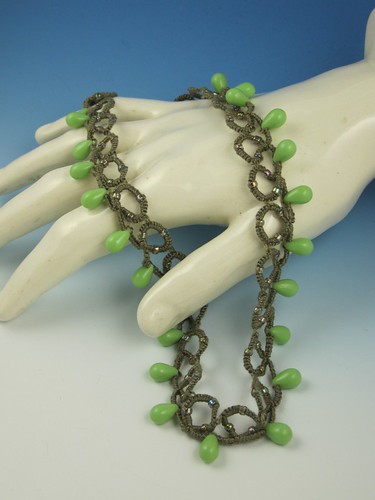This antique German Christmas ornament can be yours for $120 at a Washington, Pa., antiques and collectibles mall. (Scott Beveridge/Observer-Reporter)
By Scott Beveridge
WASHINGTON, Pa. ? Pennsylvania's famous five-and-dime retailer F.W. Woolworth single-handedly defined the decor of the American Christmas tree on a lark.
He purchased a $25 box of German blown-glass ornaments in the 1880s to see if they would sell in one of his stores, only to witness them disappear in two days.
He went on to make a substantial fortune of $25 million by importing and selling the ornaments produced in Lauscha, Germany, inexpensively and mostly one at a time, according to the 2004 book, "Pictorial Guide to Christmas Ornaments & Collectibles."
"Then after World War II no one wanted to buy from Germany," said John Taylor, a Peters Township, Pa., antiques dealer of collectible Christmas ornaments.
Today, glass ornaments made in Germany in the 1920s and 1930s are highly collectible, and sell for as much $500 apiece.
Taylor has one such hand-painted decoration shaped like a clown selling for $120 at Black Rose Antiques & Collectibles in Washington Crown Center mall in North Franklin Township.
"They are so expensive because they are so fragile," Taylor said.
Buyers at auctions have been known to pay $20, he said, for one of the ornaments, even when half of it is broken.
"I'm seeing some crazy things."
These ornaments are rare, "hot items" for a number of reasons, said Inez Gilotty, owner of Main Street Antiques in Monongahela.
"So many get broken. Collectors are picking them up," she said, adding that many relatives keep them when estates are being settled.
"It's very slim pickings. We're not even finding them in houses now," Gilotty said.
Those who are now dying in their 70s and 80s, she said, leave behind Christmas decorations they collected in the 1950s, such things as large, red, plastic bells with lights and aluminum Christmas trees. And those items also are highly collectible.
"They are looking for something like Grandma had," said another Peters Township dealer, Jim Kairys, who has been selling Christmas ornaments at Canonsburg Antique Mall.
"Christmas sells year-round," Taylor added.
America really has the town of Lauscha to thank for antique glass ornaments, Kairys said, because it once was known as the glass Christmas ornament "world capital."
It produced 95 percent of these decorations sold around the globe until 1940, when the war decimated much of Germany.
The town's glassmakers originally made kugels, or large glass ball window decorations, witch balls and garden panoramas. Someone eventually suggested they would look good, much smaller, hanging on candlelit Christmas trees, Kairys said, drawing reference from "Pictorial Guide
to Christmas Ornaments & Collectibles."
The first known order for such Christmas tree kugels arrived in 1848.
"A lot of this stuff had mercury in it to make colored glass," Taylor said. "The coloring is on the inside. Just don't drink from them."
(This article first appeared in the November/December 2011 Living Washington County magazine published by the Observer-Reporter) 















